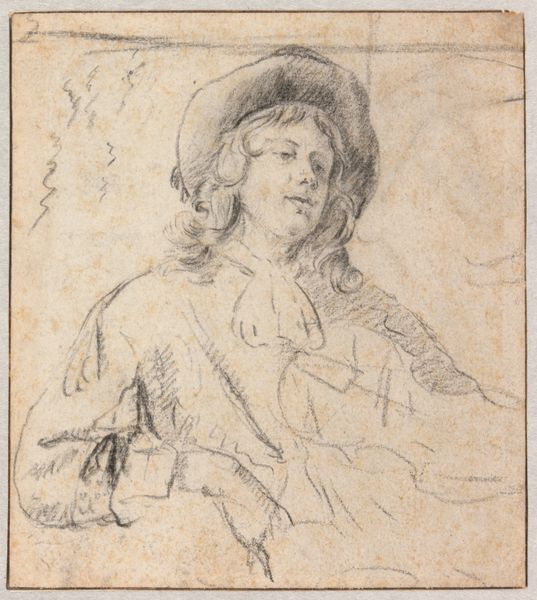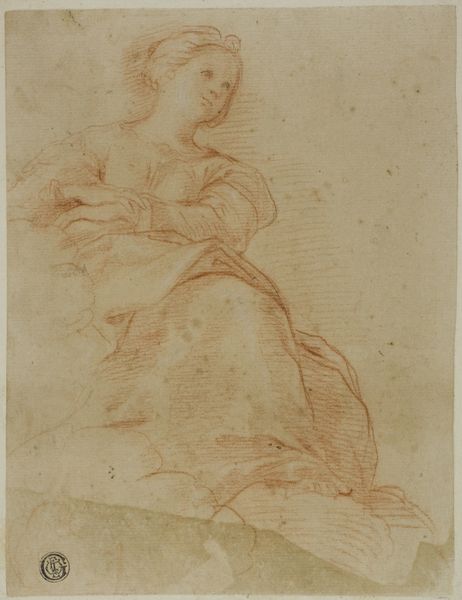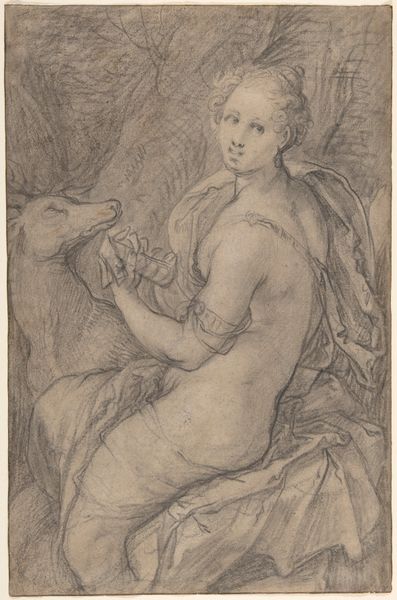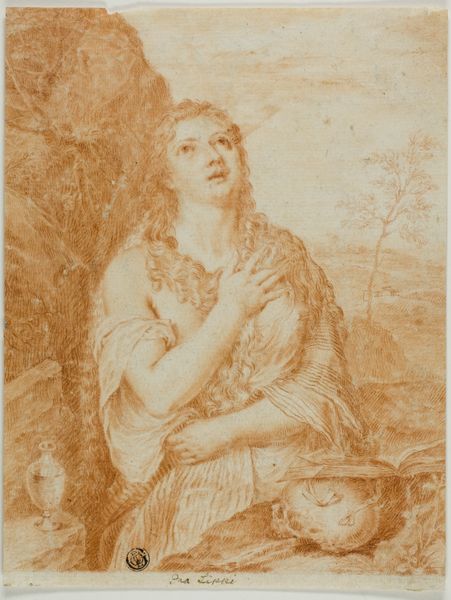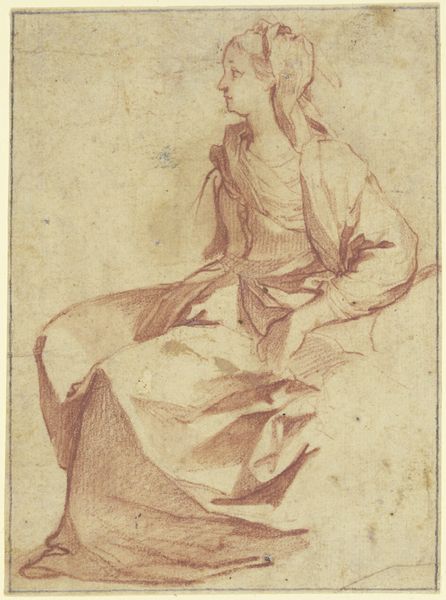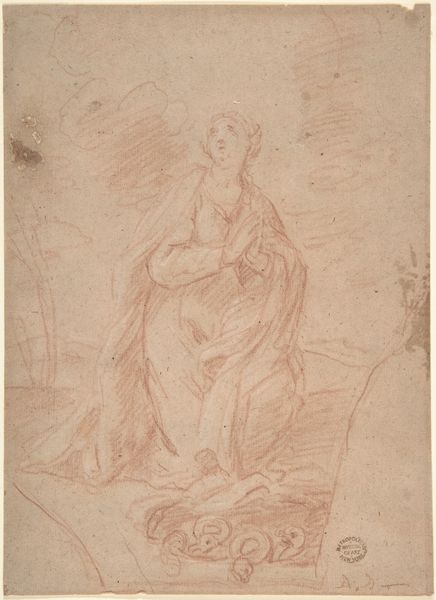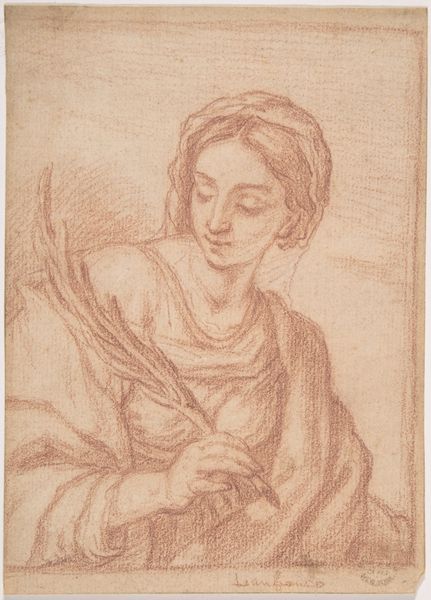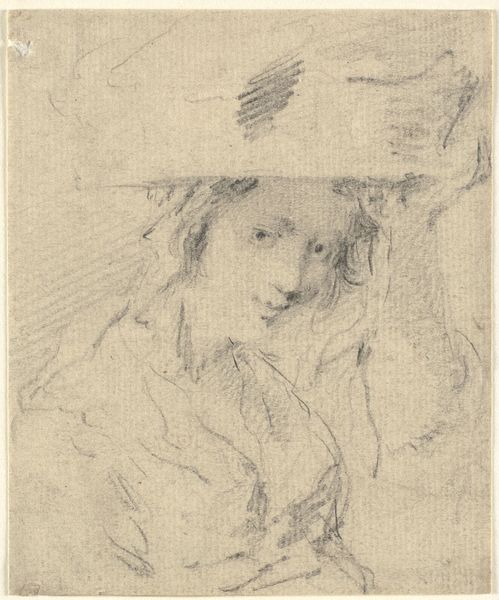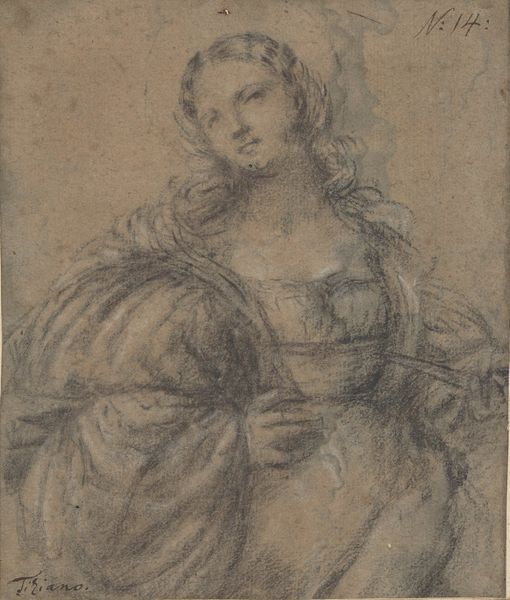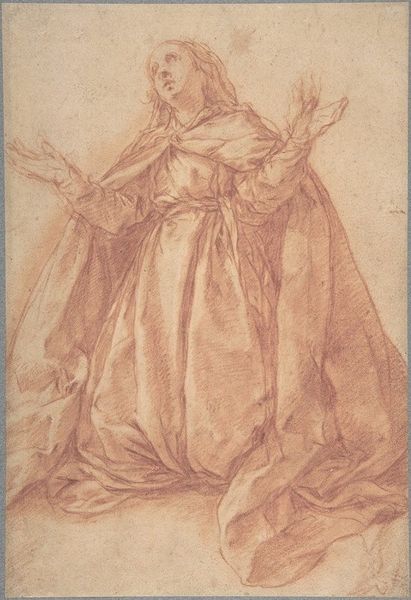
drawing, charcoal
#
portrait
#
drawing
#
baroque
#
charcoal drawing
#
pencil drawing
#
portrait drawing
#
charcoal
#
watercolor
Dimensions: Overall (irregular): 22 x 16.5 cm (8 11/16 x 6 1/2 in.) mount: 25.9 x 19.5 cm (10 3/16 x 7 11/16 in.)
Copyright: National Gallery of Art: CC0 1.0
Editor: Here we have "Saint Ursula" by Bernardo Strozzi, a charcoal drawing that I find quite captivating. There's a vulnerability in her upward gaze. What can you tell me about the means through which Strozzi made this work? Curator: Focusing on the materials, we see Strozzi employing charcoal and perhaps some watercolor wash – humble materials in comparison to oil paints on canvas. The deliberate choice of drawing as a medium suggests an interest in the immediacy of the artistic process, where the hand of the artist is strikingly visible. Consider how this drawing may have been produced; was it preparatory work for a larger painting, or perhaps a demonstration piece intended for the education of workshop students? Editor: That's an interesting question! How would those functions impact Strozzi’s approach to labor here? Curator: Well, the speed of charcoal sketching lends itself to quickly capturing ideas, a crucial element in workshops that mass produce works for increasingly wealthy clients. Its immediacy implies an intimacy with the subject. Consider, also, the materiality of charcoal itself - burnt organic material, a reminder of earthly origins. In the context of Saint Ursula, this might speak to her own mortality and the earthly sacrifices demanded of her faith. How does that make you see the work differently? Editor: That definitely enriches the artwork. It highlights how even seemingly simple materials carry a wealth of meaning related to production, artistry and its market in Strozzi's time. It also helps explain why Saint Ursula is not made in expensive materials: in doing so, it reflects on sacrifice. Curator: Exactly. And thinking through the materials and processes Strozzi engaged with, and who might have consumed the final artwork, helps us situate "Saint Ursula" within its historical and social context. It pushes us beyond simple aesthetic appreciation toward a deeper understanding.
Comments
No comments
Be the first to comment and join the conversation on the ultimate creative platform.
